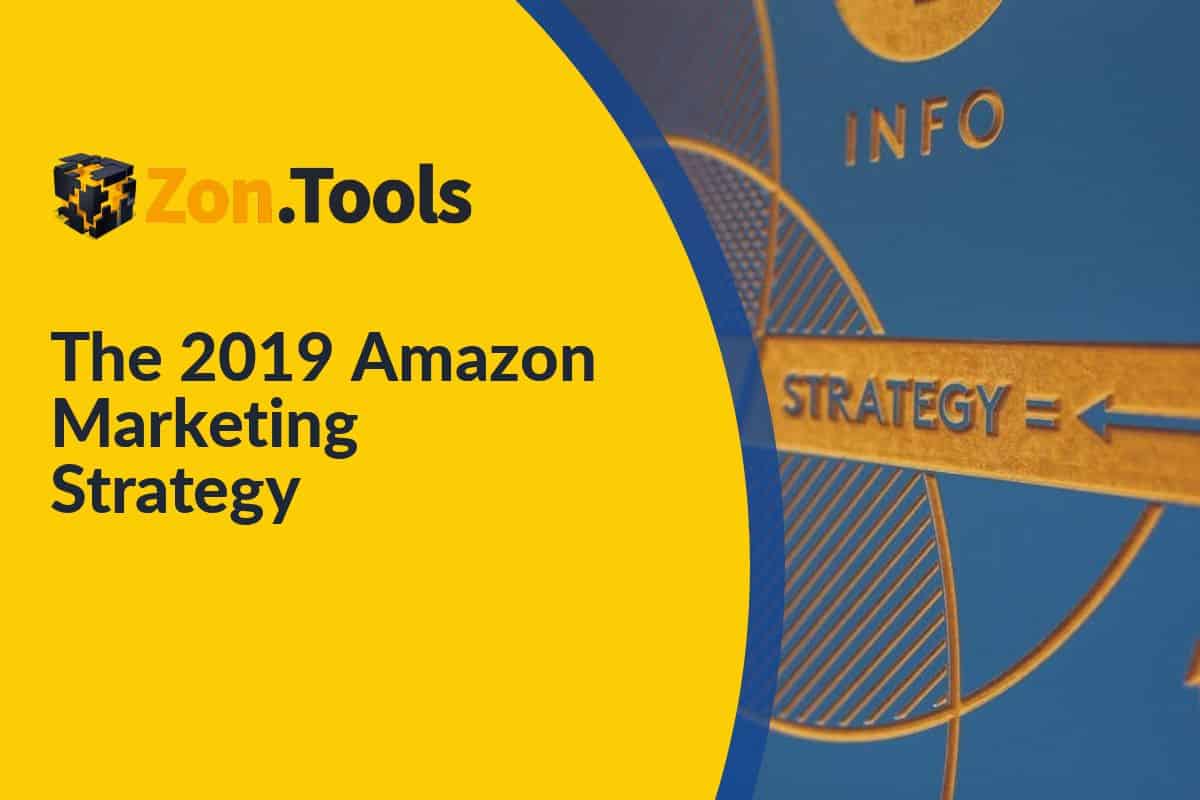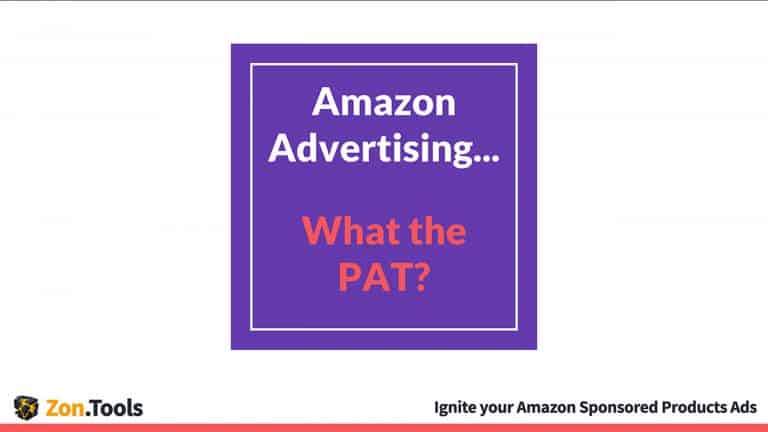The constant Amazon changes can be frustrating for people like you and I. With all the moving pieces going into a sale, working without a comprehensive strategy is impractical. A solid Amazon marketing strategy means less work for you while you’re making more sales than you have before.
A good strategy starts back on the product page. It involves a significant amount of keyword research. You also need to know about advertising and the Amazon rules. On top of that, it’s time to start building an online presence you control, rather than one Amazon can shut down.
Table of Contents
Product Page
The first step in any Amazon marketing strategy is to set up the product page. A solid product page is often the final push Amazon customers need. It’s also the basis of all other advertising efforts.
Now, you’ve had your products up for a while. You know which of your products are selling, and which are lagging behind your expectations. The first thing to examine is the actual product page for changes. With all the Amazon updates, it’s inevitable that some of your product pages need new keywords.
The first impressions on your product page are your photos and your title. Now, Amazon says the first photo must be just the product. However, that means you can put pictures of the product at different angles and infographics for improved conversion. All images, (aside from the main one) should include high-quality images and text clearly identifying the benefits of the product. (not features, BENEFIT. Benefit sells. Features do not).
The title is also an essential part of the listing. While some people have success with short titles, longer ones increase the odds of discovery. With a longer title, you can add more keywords and customer grabbers. After all, the goal is to have them click.
Depending on your product, the description field may contain technical specifications. While those specifications are necessary, you’ll need to work in some key phrases as well. If you can work the main key phrase in even one extra time, it will raise your Amazon rankings.
Keywords
Keywords make every search engine work. They match what customers search and place your product at the top of the list. However, finding the right thirty to fifty keywords for your product is a process.
Keywords and key phrases can come from Amazon itself. Typing in the search bar yields suggestions. If it’s coming up as a suggestion, people have actually bought off that key phrase. This process does take time and a little creativity to carry out.
You can also search off Amazon. Both free and paid Amazon specific tools offer a plethora of keyword options. These lists need less effort to obtain but may hold some irrelevant key phrases. You can figure out two or three tools that work well in your niche and keep going back to those.
You also have the choice to use generic keyword finders. Programs like AdWords may yield unexpected keywords. These unexpected keywords are great for drawing in general search traffic from the web. It’s best to cycle these words through your product description to find the ones that work best.
Keywords can be used in multiple places. The product page holds many of them, from the title to the description, backend search term field, back end subject matter field, and bullet points. You should also hold onto your lists for each product listing. These keywords can then become what you target for paid advertising.
Over time, what customers search will morph. It’s highly unusual for keywords not to change. As sellers, we must adapt to our customers. If something isn’t meeting your expectations, it’s time to put new keywords in for a trial period.
Amazon Advertising
Amazon marketing is based on the premise of Pay-Per-Click (PPC). This is great because you’re only paying for people who actually click to your product page. Setting up Amazon advertising campaigns is straightforward.

There are two options for Amazon advertising, automatic and manual. In an automated campaign, Amazon examines your product listing and then selects what keywords or product page to bid on. You’re in control of how much you want to bid and how many bids can be made in a given day. This is a terrific way to start out.
Manual targeting requires more finesse. In manual targeting, you control each keyword or product you bid on. The new Product Attribute Targeting feature allows users to target specific Product pages as if they were keywords. Instead of letting Amazon choose your keywords, you type them in. You also get to decide how close an Amazon customer’s search must match the keyword before you bid. This level of control maximizes your advertising budget.
It’s important to figure out how to get the top bid spot, regardless of what type of campaign you’re running. Customers are more likely to click the sponsored products at the top of the page than they are the ones in the middle. This may mean narrowing your campaigns down so you can make a higher bid on your best-performing keywords.
If you want to scale up, you will need a program that will help you manage your Amazon advertising campaigns. Functionalities like thresholds, which stop bidding if a keyword isn’t performing along with their in-depth statistics and the like.
This is exactly what zon.tools does – it automates amazon sponsored products best practices and allows you to manage your campaigns in an unprecedented way. Our Smart Engines are extremely flexible and can adapt to any amazon advertising strategy or goal.
Reviews
Reviews are incredibly important – it helps with social proof and for better conversions. The conversion rate is a factor in the ranking algorithm. Obtaining reviews ergo is a constant aim. Fortunately, there are multiple ways to gather positive customer reviews.
The first method, Amazon performs automatically. When your customers order, Amazon sends a series of emails. The last one of those emails is a feedback request. Unfortunately, not a lot of people heed this message.
Another review gathering possibility is a packaging insert. Packaging inserts are relatively cheap to obtain and add to shipping materials. All they need to do is encourage people to give feedback. It helps to phrase it as by giving these reviews, they’re helping their fellow Amazon customers.
It’s also vitally important to manage any negative reviews you receive. Customers look at negative reviews to determine product quality and customer service. Respond to the negative reviews professionally and solve the problem. Those negative reviews will become a selling asset.
When you’re seeking reviews, it’s easy to keep pushing. Amazon set up its guidelines to keep the platform fair. Apart from the obvious, like not buying reviews, we as sellers also cannot contact customers unless they contact us first. We’re also not allowed to ask for positive reviews or offer incentives. Violating the rules may get your seller account suspended.
There are a lot of options once you leave the Amazon site. For example, you could build an email list for your niche shop. You can ask people to submit Amazon reviews using this list. Options like this are becoming more popular as Amazon continues to tighten their regulations.

Off Amazon
Once you leave the sphere of Amazon’s site, your possibilities increase dramatically. Initially, who you can reach off Amazon will be limited. It takes time to build out a presence, but once you do, you’ll have a lot of influence.
One of the easiest ways to contact your Amazon customers is building out an email list. Since we’ve talked about product inserts, you can add an invitation to an email list to that too. Many sellers entice people onto their mailing lists with the promise of insider sales and bonus material. Should you launch a new product, an email list boosts sales immensely. You can also ask your list for positive reviews without worrying about Amazon’s rules.
Websites go hand in hand with email lists. Sites are a cheap way to give your niche brand a home. This home draws in both Amazon and non-Amazon customers. It can explain your story, highlight your products, serve as an email landing page, and more.
Amazon may have cornered their own PPC market. However, you can still use third parties to drive people to your listing. These ad networks appear in more places than Amazon PPC does. They are stellar for niches that don’t have ample space on the Amazon platform proper.
Once you’re off Amazon, you no longer have to mind what you say quite as closely. This means you can actually seek customer feedback, provide support, and more. Your next product may even come out of customer suggestions from your email list.
Summary
A comprehensive Amazon marketing strategy is necessary for 2019. Without one, you’ll spend a lot of time rehashing things you’ve already tried. That’s a lot of time that could be used to live your life, find new products, or start something else. You want that time.
Your marketing strategy needs useful keywords, professional product listings, smart advertising budgets, and a comprehensive plan. With these in place, your success will improve. You’ll see more sales and more return customers. Over time, you’ll wonder how you did anything else.
Did you like this article? Leave us a comment below with your favorite part!
Also published on Medium.








